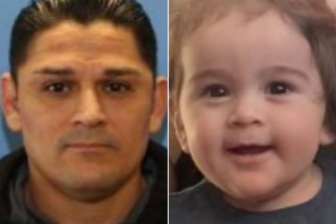WATCH: There has been an increase in the number of strokes among younger people in the last 20 years. Crystal Goomansingh reports on how to recognize the signs of a stroke.
TORONTO – Ben Fox is 15, six-feet-tall, and 180 pounds. The grade 10 Ontario student played AAA hockey, watched what he ate and lived a healthy, happy lifestyle. During hockey practice last summer, Fox suffered a massive stroke.

His family remembers it vividly: It was a Tuesday night in August. It was his team’s first practice of the year. While doing drills on the ice, Fox collapsed. His coaches and teammates surrounded him – Fox couldn’t pick himself up.
Luckily, his coach recognized the signs of stroke because of his own child’s encounter with the injury. Fox had the tell-tale signs: he couldn’t pick himself up, his speech slurred, his left pupil was “full blown dilated.”
“I was trying to get up off the ice and I couldn’t. My left leg wouldn’t work, I just couldn’t feel it,” Fox told Global News.
READ MORE: Some Canadians misunderstanding stroke recovery process, report says
He and his family are hoping to share his story with other Canadians so that they understand the importance of detecting the signs of stroke and seeking medical attention immediately.
The Heart and Stroke Foundation launched a new campaign Wednesday that raises awareness of the signs of stroke.

It’s teaching Canadians about FAST – a simple way to recognize signs of stroke and take quick action – the faster you get to medical help, the more of a person you save.
FAST is translated into several other languages and is used globally.
“Our objective is to ensure that all Canadians, no matter where they live or how old they are, know and remember the signs of stroke with the FAST approach,” said Ian Joiner, director of Stroke at the Heart and Stroke Foundation.
READ MORE: Canadian study could lead to better detection, treatment of stroke risk worldwide
“The faster you can get to the right hospital when experiencing stroke, the better your chances of survival and recovery with little or no disability. There is a saying that ‘time is brain’ or, put another way, that ‘time lost is brain lost,’” he said.
Brain cells die at a rate of two million per minute after stroke, he warned. Restoring normal blood flow sooner rather than later makes a significant difference.
The national organization says that not enough Canadians know the signs of stroke and what to do. Yet stroke is the number three killer of Canadians and one of the leading causes of disability.
More than 80 per cent of Canadians who have a stroke and make it to hospital survive, but with varying degrees of recovery.
Stacey Yepes, 49, encountered three strokes in three consecutive days. The first time it happened, Yepes was watching television at home.
READ MORE: Stroke patients’ health outcomes influenced by spouse’s optimism
“My left side went completely numb, I couldn’t lift the water bottle on the floor, my face was frozen,” Yepes described to Global News.
“I just had flashes of every commercial I’d seen on TV about stroke signs – speech, weakness, numbness,” she said.
Once the feeling dissipated, she rushed to the emergency room. Doctors told her it might be stress-related and to head home.
Two days later, when the incident recurred while driving home, Yepes whipped out her phone to record her symptoms. She tried to drink water, she tried to string together sentences and she tried to smile.
When she presented the video to doctors, they confirmed what she had thought: Yepes had a stroke.
Yepes has recovered since then. She relies on medication for cholesterol management and blood thinners. She’s also much more conscious about what she eats and watches her stress levels.
She’s regained about 95 per cent of strength on the left side of her body.
READ MORE: 5 lifestyle changes to improve your heart’s health
“I was told I was so fortunate to be here and to be alive. It’s because I got help so quickly,” Yepes explained.
Fox is on the mend, too. At first, he was paralyzed on the left side of his body and wheelchair-bound. But with the help of rehabilitation, the teen is now walking on his own and without a cane. He’s even returned to school.
“If you could see Ben now, you would be shocked that he had a stroke. He’s come so far in such a short time frame and it’s because people recognized what was wrong and he received treatment,” his mom, Jodi, told Global News.
“That’s why we’re sharing our story. Our focus is to make people identify those signs and symptoms so they can be as fortunate as we are. You can save somebody’s life,” she said.
carmen.chai@globalnews.ca
Follow @Carmen_Chai



Comments